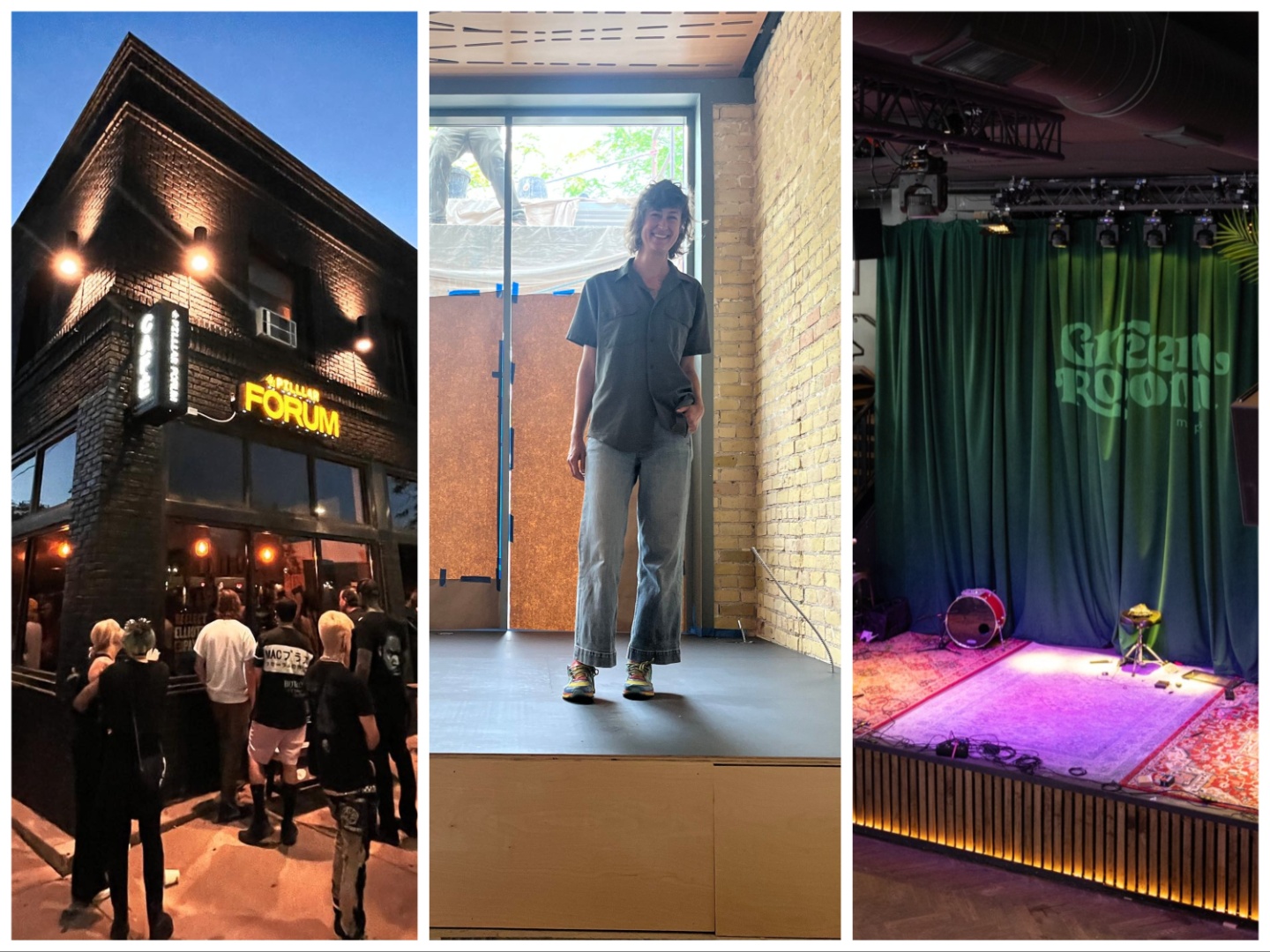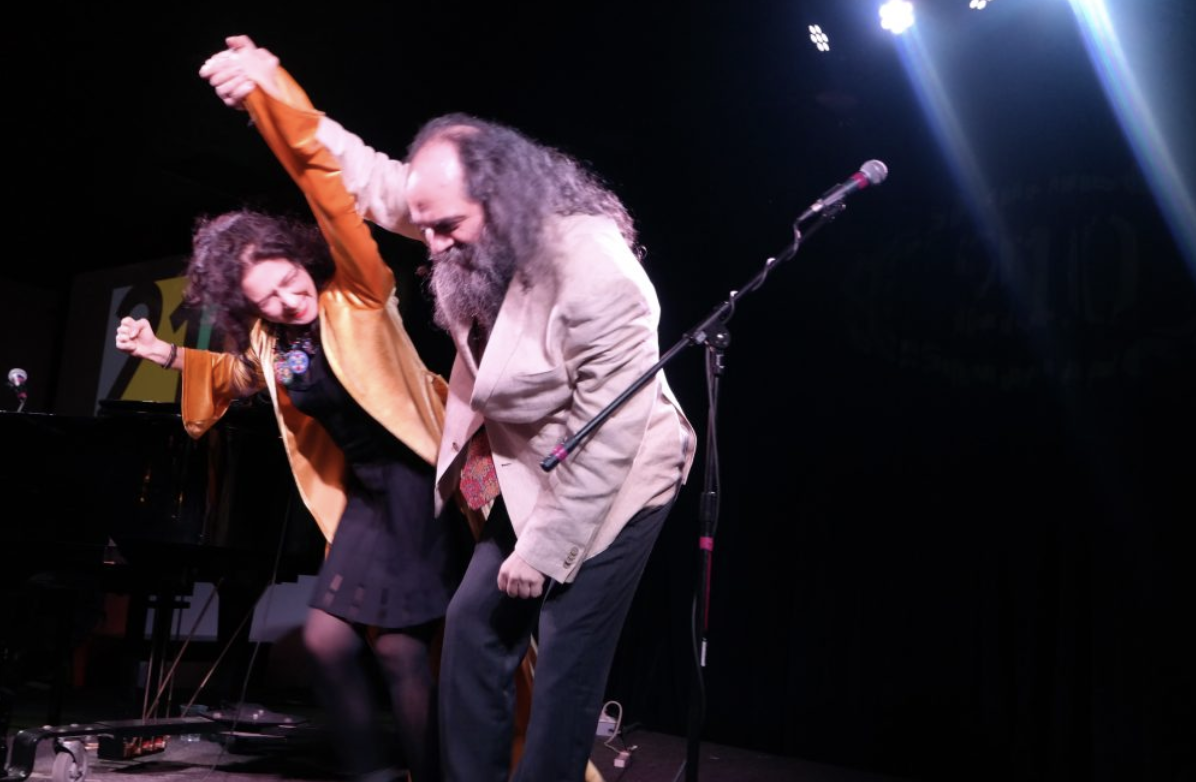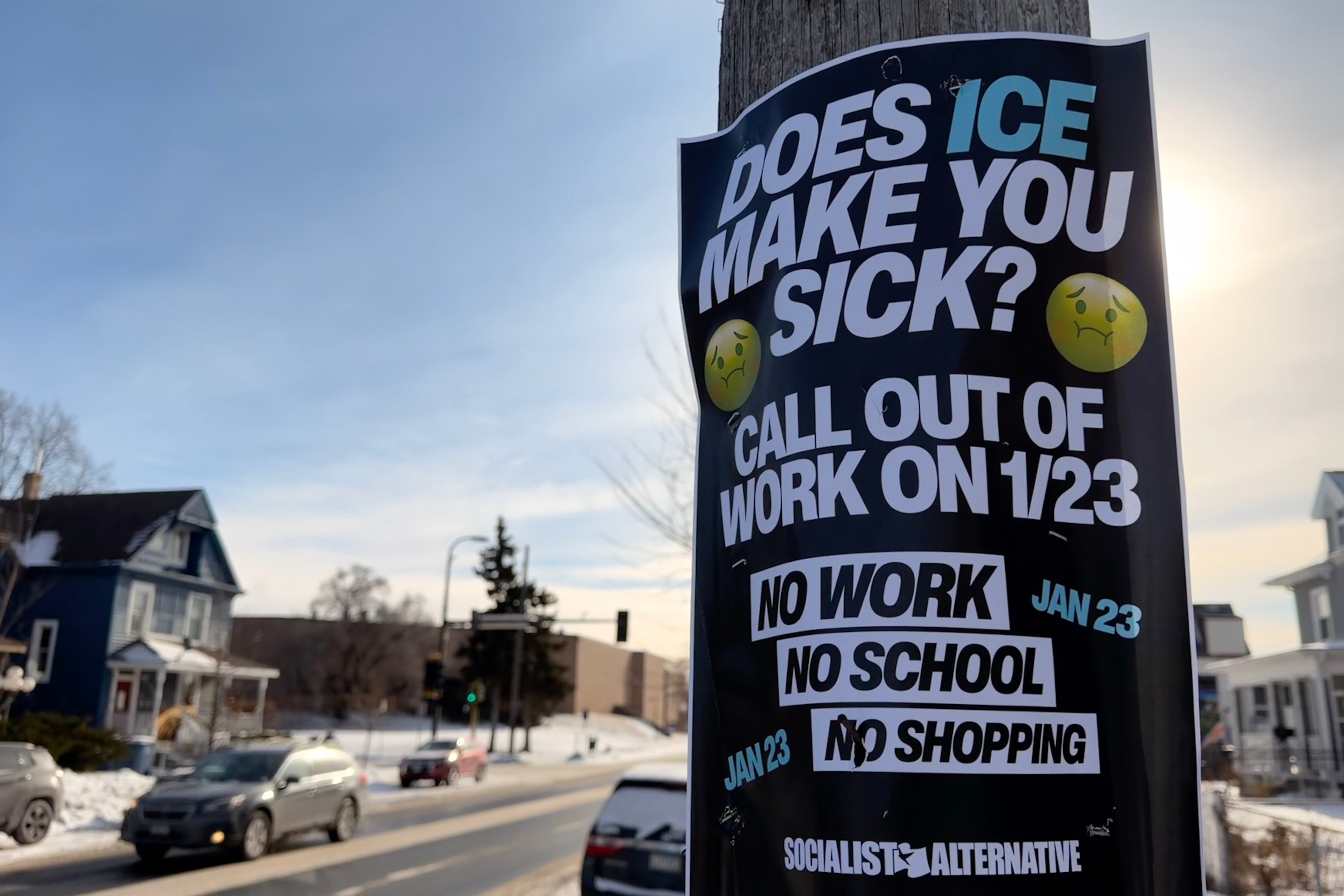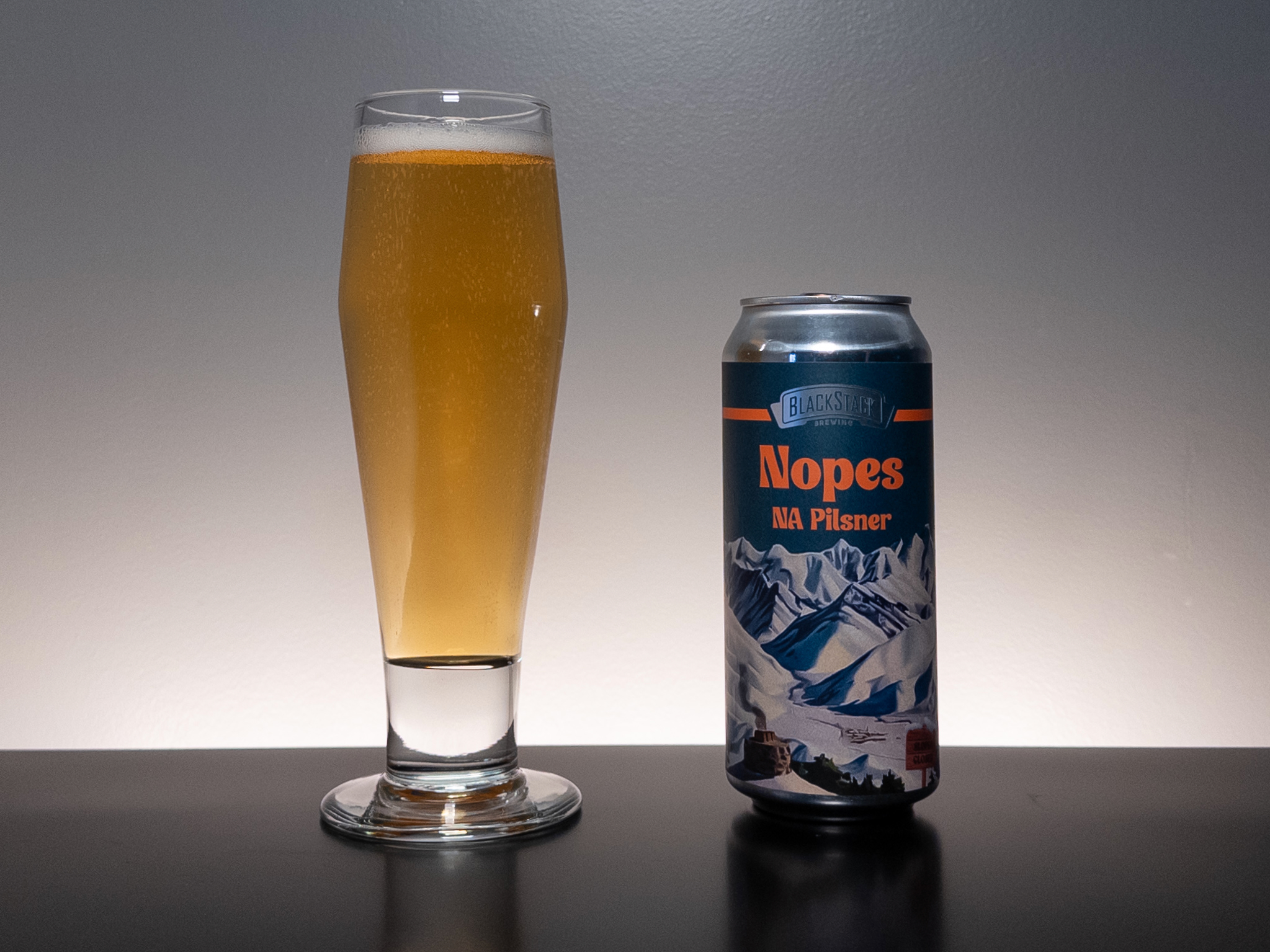You could walk right past Cloudland without even noticing. An 8 1/2 x 11 sign with the club’s name in the window is all that indicates that anything might be happening in the storefront sandwiched between the union hall and Prairie Woodworking on East Lake Street. But since October 4 Cloudland has been among the newest, much-needed small venues to pop up in Minneapolis.
Inside, the layout is unfussy but not grungy. One wall is exposed brick; another is a fitting cloudscape. You can duck out to a patio out back and hopefully not annoy the neighbors. A disparate mix of band patches adorn peoples’ jackets: MDC, Lifter Puller, hell, even Coal Chamber.
By the time Citric Dummies blasts into their set around 7:30, what appeared to be a couple dozen people milling around has clumped together into a sizable crowd. Not enough to fill the 150-cap room, maybe, but with three more bands scheduled this Saturday night, we might get there before long.
Dummies’ bassist Drew Ailes is rattling off quips and non sequiturs between songs (“I know it looks like we’re not doing anything because we’re just standing here and you’re used to seeing the Dillinger Escape Plan at the Fine Line”), so much so that his bandmates enact a playful squabble for our benefit about whether they need to stop between every song for Ailes to talk.
And that’s Cloudland—not quite as makeshift as a house show, but still with a slightly more improvised feel than established clubs.
"As showgoers and artists, we wanted to participate in rebuilding what felt missing: small venues geared toward both the local scene as well as independent artists from out of town," Cloudland’s co-owners, Brad Lokkesmoe and Maren Macosko, told us ahead of their grand opening earlier this month.
If that feels to you like something that’s been missing in the Twin Cities recently, well, maybe it has. But with a slew of new venues like Cloudland opening, we may finally be filling the hole left behind by the closing of so many local small and mid-sized venues.
A Decade of Dying Twin Cities Venues
Concert venues die. That is the natural order of things. Today nobody’s surprised that the epicenter of ’80s Twin Cities punk, Jay’s Longhorn Bar, is now a downtown Minneapolis parking ramp, just a couple blocks from the glitzy Four Seasons. But if you started going to shows around the turn of the millennium, you might struggle to recognize where today’s young bands are getting stage time.
Inhale deeply as we run through the venue casualties of the past dozen or so years…
Uptown Bar & Café, an institution whose history traced back to the 1930s, closed in 2009 to suffer the indignity of becoming an Apple Store. Before it stocked iPhone 15 Pros, the address collected gallons of spilled beer from the Replacements and hosted 40 fans for a 1989 Nirvana show. From 2009 to 2014, Cause Spirits & Soundbar attempted to pick up that local scene slack over at Lyn-Lake.
The 400 Bar brought bands to the West Bank from the 1970s until around 2013, when its final ownership group shut it down after 17 years. Bonnie Raitt, the Jayhawks, and Semisonic all performed inside the historic building, and scene-vet siblings Bill and Tom Sullivan kept it rocking to the bitter end. Plans to relocate the 400 inside Mall of America (mercifully) fizzled out. Just down the road, Nomad World Pub opened in 2005 as a booming room for smaller local shows, saw Lizzo host karaoke in the ’10s, became Part Wolf under new ownership, and closed early last year.
The Hexagon Bar, a holdover from Minneapolis’s notorious “Hub of Hell,” burned in the 2020 uprising that followed George Floyd’s murder. Its Facebook page, briefly and without substantiation, blamed arsonists affiliated with Black Lives Matter, before teasing a comeback. The Seward dive bar that hosted countless free punk, hardcore, and metal shows never returned.
"The Hex used to be one of my favorite places to play," says Drew Ailes of Citric Dummies. "I booked probably 50 to 100 shows at Hexagon from 2011 to 2015. There weren't a lot of rules, and it was free: You'd get all sorts of weird people that would wander in and get exposed to new music—sometimes it was cool, sometimes it was not cool."
And that’s just scratching the surface.
St. Paul is still mourning condemned metal paradise Station 4 and old-school hang Big V’s. In Minneapolis we’ve not even mentioned downtown Grumpy’s and Dinkytown’s collegiately swanky Kitty Cat Klub, though reopening chatter swirled around the latter club as recently as last year. While it doesn’t fit the capacity scope of this story, we gotta pour one out for AEG’s four unfortunately named years (‘12-’16) with Mill City Nights (née The Brick). And, of course, there are the less official rooms on the other end of the spectrum. "Medusa was so important to [the local punk scene]," Ailes says, rattling off other punk spaces like Inferno (where the bathroom lacked a toilet*) and Secret Service ("one of the coolest things we ever had").
Did we miss some other concert locations? Probably.
But no venue ghost looms larger than Triple Rock Social Club, the beloved West Bank bar/restaurant/club that operated from 1998 until 2017. In 2003, when the T-Rock co-owners Erik and Gretchen Funk built out the dark, punky, 380-capacity concert hall from their adjoining bar, it was intended to fill a void.
“In the late ’90s, the number of venues was much smaller; First Avenue, with that particular booking crew, they were missing a lot of stuff—like Jawbreaker only being able to get a show in Mankato,” says Funk, whose punk band, Dillinger Four, was selling out the Mainroom during that era. “To people in the punk scene in particular, it felt more glaring. I felt strongly there was plenty of demand for shows that weren't happening in the Twin Cities."
In 2023, folks simply won’t shut up about Triple Rock.
"I get reminded of it a lot,” Funk says. “We're really lucky to be remembered so fondly… I don't think we realized that would be the case."
Hell, these days Michaelangelo Matos is out there writing oral histories about T-Rock for the revived Creem Magazine, its sign has been enshrined in Las Vegas’s brand-new Punk Rock Museum, and, just last week, local brewery Falling Knife threw a remembrance celebration. (Earlier exaltations exist: Vice once declared Triple Rock “the heart of the Midwestern music scene,” and L.A. punks NOFX wrote their ballad to its famously stiff drinks, "Seeing Double at the Triple Rock," back in 2006.) Many of the folks behind the upstart venues featured below spoke glowingly of its legacy, one they hope to honor.
"It's great that whatever was going on there inspires people... I don't know that it should inspire them from a business perspective,” Funk says with a chuckle, adding that T-Rock’s demise was, ultimately, a financial decision. “I never felt like, back in the second half of the Triple Rock, that the Twin Cities, especially in the winter, had [concertgoer numbers] to support so many local shows.”
“People didn't realize how important and vital Triple Rock was at the time,” adds Ailes, perhaps confirming Funk’s point. “It's one of those ‘don't know what you got till it's gone’ kinda things.”
Forging a New Live Music Landscape
That shrinking number of vital local venues isn’t lost on Corey Bracken, owner of Pilllar Forum in northeast Minneapolis.
Bracken, who grew up playing in bands in the early 2000s, recalled earlier this year that back then it felt like, “there [were] a ton of places to play—like, small places. Christensen's Big V in St. Paul, the 400 Bar... just a bunch of small, little venues that up-and-coming bands, and even more notable bands, would play at."
With so many of those spaces gone, it can be even more difficult for young musicians to find places to cut their teeth in the Twin Cities. Which is why, for a little over a year now, Bracken’s coffee-slash-skate shop has also been a regular home to live music, making it one of a half-dozen or so venues and show spaces—big and small, locally and nationally focused—that have opened around the Twin Cities over the past year and change.
Green Room in Uptown launched with a lineup that included local rockers Gully Boys and Scrunchies in January. Seward Cafe reopened in May, and that same month, RÖK Eatery on West Seventh slashed the menu and rebranded as RÖK Music Lounge & Bar. In June, the historic Uptown Theater was transformed into a 1,688-cap venue (not without some controversy—bring back the real sign!); in July, West Bank’s Acadia Cafe reopened with a renewed emphasis on live music. Then of course there’s Cloudland Theater on East Lake Street, which just hosted its first shows earlier this month.
And that’s just those that have opened in the last 12 months or so. White Squirrel Bar in St. Paul debuted in June 2021, on the day indoor mask mandates lifted; just pre-pandemic, you’ve got Granada in Uptown in 2019, around the same time as Underground Music Cafe in the North Loop. Coming soon is Zhora Darling in Northeast, which is already up and running on the restaurant side and will introduce its 200-cap venue space next month with the New York post-hardcore band Quicksand.
It’s almost like we’ve got a thriving local music community! To the point that, for DIY documenter and promoter Matthew Graves of UndercurrentMPLS, it’s actually tough to stay on top of it all. When we spoke earlier this month, he’d just finished compiling an infographic of local venues, “from DIY spaces to corporate death stars,” to help him stay organized (and inform Undercurrent’s 14,000 Instagram followers).
“It’s getting harder and harder to keep track of, because there’s so much,” chuckles Graves (known to everyone as Gravey). And to be clear, that’s a great problem to have. “Especially as someone who goes to shows all the time, having more options is great. And seeing bands in new spaces is… if you see the same band in the same room all the time, it’s kind of like, just slightly less exciting than if you get to see them in different scenarios with different vibes.”
Many of the folks behind these newer spaces have, like Pilllar’s Bracken, watched as the number of venues has dwindled in recent years. They want to step in to fill that vacuum, using their existing space—bar, restaurant, coffee shop—as a way to build back that live music infrastructure. “Small, local venues have kind of been disappearing for up-and-coming artists," owner Brad Cimaglio told us at the time of Acadia’s reopening. "We want bands in there seven nights a week.”
Adding live music isn’t just a noble act; it’s good for bands, yes, but it can be good for the venues, too.
“Honestly, making the pivot has been a really healthy thing for—not only us, but also for that intermediary artist selection in the Twin Cities here,” RÖK’s Travis Wycislak told Racket shortly after they made the live music switch. “There’s such a beautiful, vibrant scene that just spans every genre possible. And there’s only so many venues out there, and there’s only so many that have a smaller-capacity room.”
No one is printing money here, and let’s not be naive: The challenges of running a show space are numerous. One recently opened venue we haven’t yet mentioned is The Treasury, an all-ages, alcohol-free room that landed on Payne Avenue in St. Paul in 2021. Owned and operated by nonprofit Catalyst Music, the space closed this summer after “encounter[ing] issues that make this an unsustainable space for the venue in the long run."
Things were tough for The Treasury from the start. “I kid you not: We finished construction on March 13th of 2020, which was the day [Gov. Tim] Walz enacted the first stay-at-home orders," Jack Kolb-Williams, the former executive director of nonprofit Catalyst Music, told Racket. But challenges can abound after opening, and there are the lingering effects of the pandemic, too—what do people expect from their neighborhood live music venue in 2023?
That’s a question Green Room owner and operator Tanner Montague has found himself returning to over and over since January. Montague opened Green Room because, among other things, “I felt there was a need for a space this size that is truly independently owned in the Twin Cities, and even this region of the Midwest,” he says.
It’s been an ongoing process since to determine how the venue can best serve the neighborhood, and that can be a tricky thing.
“There are people here. Uptown is not deserted, it’s not a ghost town,” Montague says. “What do they want? What do these people want? What brings them out?”
It’s part of the reason Green Room now has Parlour slinging burgers in the kitchen; Montague wants people to see the venue as a space not just as a great place for music, but as a place to grab dinner, or to belly up at the bar. “I think a good way to survive is just: being flexible,” he says.
Every venue is dealing with its own challenges; each fills its own niche. Pilllar is a coffee shop that can’t serve alcohol, so there’s no revenue there, but it means every show can be all-ages. Acadia is trying to recoup the financial losses from that freaky 2022 bus crash that caused it to close in the first place, but it’s carrying on its storied tradition of live music on the West Bank. RÖK’s future is uncertain as its building is in foreclosure along with adjacent Keg & Case Market, but Wycislak is proud, for now, to be part of West Seventh’s art district.
Gravey is bullish on the local music community, noting that right now we’ve got a good variety of differently sized rooms and a lot of new bands made up of enthusiastic young folks—and he cautions against looking at the recent past with rose-colored glasses. “It’s easy to take cool things for granted in the moment,” he says. He wants to emphasize that the music scene is whatever people make of it—and right now, if you’re paying attention, people are making a lot of it.
“Something I see all the time with people who get involved in music scenes is they don’t fully grasp how great a given moment of time is for music in their city as it’s happening,” he continues. (He’s 40, kids—you should trust him.) “Then years go by, they get a little older, and look back on it and are like, ‘Wow, that really was a special and exciting era…’ It’s fascinating to me that whatever times [people] tend to romanticize is usually just whatever era they were most active in playing and going out to shows.”
So Now What?
At press time, no crystal ball exists to determine how long this new generation of small- to midsize venues will satisfy artists and fans. Triple Rock’s Erik Funk says the motivations of the proprietor are key, and he knows his old friends from Cloudland are it for the right reasons.
Still, he supplies a less-than-rosy metaphor for the cold, hard economics of selling tickets and drinks for a living.
"The music booking business, over the years, I decided it's closest to basically pulling a slot machine handle,” Funk says, noting that he’s glad to see ticket prices for local shows appear higher and, thus, more sustainable post-pandemic. “You're basically making educated bets on any given event. How many people are going to come to this thing? There are so many variables... your winners need to pay for your losers, and the chance for success is more like gambling than a business."
For all of the necessary agonizing over audience demand, talent supply, and balance sheet gymnastics involved with running a concert venue, there’s at least one anecdotal reassurance from Ailes: That the generationless love of live music is still packing places old and new.
"I don't know most of the people who go out to the shows, that's the coolest part," he says of seeing new bands and faces at shows circa 2023. "Even at 7th St., even at the Cloudland shows... After the pandemic, I dunno if people were waiting to put on a leather jacket, and they finally had the confidence to go see the miscreants of Minneapolis. It's refreshing. I was worried that, after the Nudieland shooting, we weren't going to have shows ever again, that nobody would feel safe. But in the punk scene in particular, people have come out more than ever with support."
*Correction: Ailes tells us the Inferno did, in fact, have a toilet, but it was "so fucked up and disgusting" that one would simply "piss toward it." Racket regrets the error.







